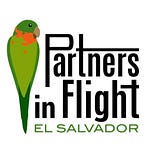El Salvador: complete results in the Global Big Day, May 8, 2021
For the seventh time, Salvadoran citizens, residents and foreigners in El Salvador, participated in the world’s largest bird watching event, an event organized in May to celebrate World Migratory Bird Day.
This year, with the presence of the coronavirus pandemic, participants made an effort to keep their distance and protect themselves with masks and hand washing. Thus, at least 212 people participated in the event from zero hours to twenty-three hours and fifty-nine minutes on Saturday, May 8, recording, at press time, a total of 318 bird species and a generation of 406 species lists.
These numbers are the greatest effort that has been made to achieve the registration of a high diversity of birds in all environments and in most ecosystems of the country, as shown in the graph below, which compares the number of species and lists recorded since 2015.
The image is clear in showing the continued growth in the number of participants and therefore in the species record, overshadowed in 2020 by the onset of the pandemic.
In a country like El Salvador, with a total absence of public and reliable sources of biodiversity data, the widespread use of eBird and iNaturalist are the best option to assess the status of bird populations and hence the celebration of this remarkable event, where the 212 participants, including biologists, amateurs, photographers and the general public, turned to visit farms, urban parks, national parks and even from their homes, to record and document the species that inhabit these sites.
Despite the high number of participants (212), there is still a small number of observers registered and using the eBird platform, 118 in total were involved in the data collection and of these, only 39 were women, although in total participants were a considerable number, they are still required to actively use the platform.
Teams and individuals were distributed throughout most of the country, with the exception of San Vincente and La Union, and in general with low participation in the eastern part of the country; most participants were concentrated in the central and western parts. This indicates that the strategy for future events should be based on territorial leadership, resource guards, local tourism guides and resident citizens.
The record of 318 species in a single day represents the observation of 54.63% of the species recorded in the country (582 species) and on the other hand, in May 2021, 357 species have been recorded, the 318 represent 89.07%. Other valuable data are the identification of 12 of the 18 endemic species for Northern Central America recorded in El Salvador, and the contribution with distribution data on 43 Threatened and Endangered species according to the Ministry of Environment and Natural Resources (2015).
Undoubtedly the first public event post mandatory quarantine, has been a success, an element that we owe to the pandemic and quarantine, which made us all stay at home for a long time and adopt birding as a hobby and an adoption to get involved in doing citizen science.
On the other hand, different group efforts made the day a success, although coordination and communication among participants is necessary, it is also necessary to train and educate observers, many of the rangers and tour guides, especially women, were passive elements in this day because they did not have an eBird account.
In the words of Héctor Quiteño, co-author of the book Aves de El Salvador: our production of lists is less than half that of the leading countries, Costa Rica and Panama, it seems that we work more individually than as a team. This must have an impact on productivity. It is true that those countries have twice our species, but we have more population and it is distributed in less territory. We should have more observers per area.
The challenge is enormous, these results make us happy and enthusiastic to continue disseminating information about the birds of El Salvador.
I thank Partners In Flight El Salvador for letting me write these results, as well as Ricardo Pérez León for preparing the maps, and Rocío Juárez for proofreading. Photographic contributions were provided by Bany Alvarenga, Morena Azucena, Elena Martínez Cantón and Ricardo Pérez León.
Héctor Quiteño’s book can be downloaded from the following site:
#globalbigday!
Néstor Herrera, Paso Pacífico
